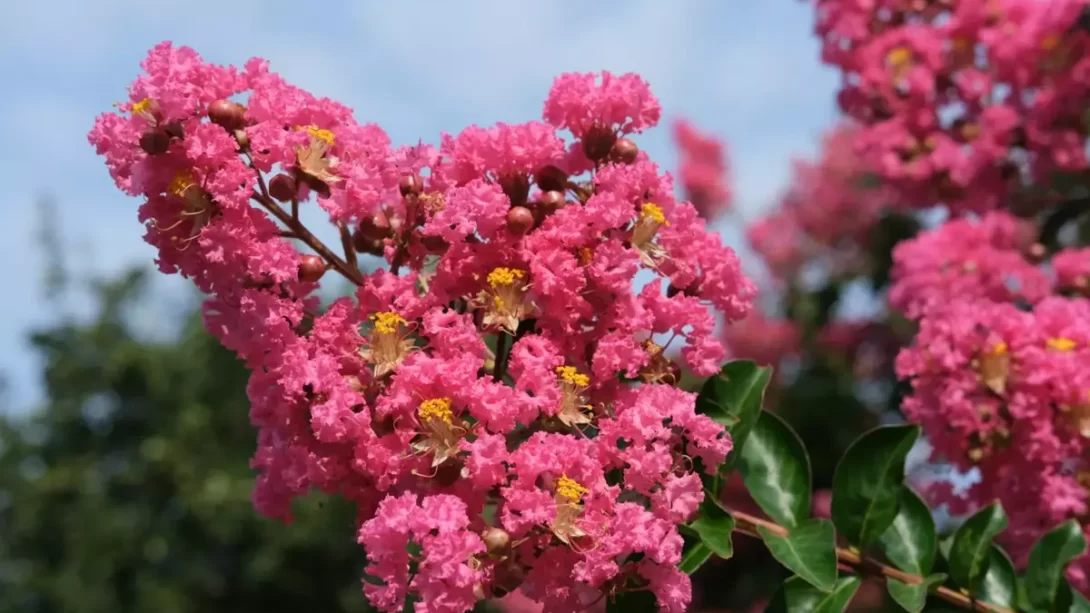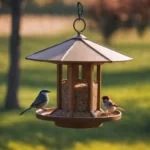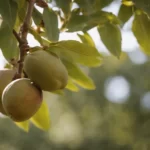Crepe myrtles are a favorite among gardeners for their beautiful blooms and ease of maintenance, but when it comes to maintaining a garden, understanding the local wildlife, particularly deer, is crucial. Deer are known for their voracious appetites and can be a concern for gardeners. This article explores the relationship between deer and crepe myrtles, aiming to provide insight into how these plants fare in areas with deer populations.
Crepe Myrtle Overview
Crepe myrtles, scientifically known as Lagerstroemia, are popular for their long-lasting flowers that bloom in various shades, including pink, red, purple, and white. These plants are not only valued for their ornamental beauty but also for their ability to thrive in diverse climates and soil types. They can be grown as shrubs or small trees, making them versatile for different garden landscapes. Understanding their role in the ecosystem is key to exploring their interactions with wildlife like deer.
Deer Feeding Behavior
Deer are herbivores with a diet that varies seasonally, but they are often drawn to tender shoots, leaves, and flowering plants. Their preferences can depend on the availability of food sources in their habitat. In suburban areas or places where their natural habitat has been altered, deer may venture into gardens in search of food. The impact of deer on garden plants can range from minor nibbling to complete devastation, depending on the plant species and the deer population density.
Deer and Crepe Myrtle: The Attraction
When it comes to crepe myrtles, the question arises: do deer find them attractive as a food source? Generally, crepe myrtles are not the first choice for deer. However, in situations where food is scarce, deer are less selective and may feed on a wider variety of plants, including crepe myrtles. The tender leaves and shoots of young crepe myrtle plants can be particularly vulnerable to deer, especially in early spring when other food sources are limited.
The extent to which deer feed on crepe myrtles can also vary based on the specific deer population and regional differences in deer behavior. In some areas, crepe myrtles might be largely ignored by deer, while in others, they may face more frequent browsing.
Factors Affecting Deer’s Consumption of Crepe Myrtles
Several factors influence whether deer will target crepe myrtles in a garden. One primary factor is the availability of more preferred food sources. In areas rich in deer-preferred plants, crepe myrtles might be less targeted. Conversely, in landscapes with limited food options, deer may be more likely to consume them.
Seasonal changes significantly impact deer feeding patterns. During spring and early summer, when food is abundant, deer might not bother with crepe myrtles. However, in late fall and winter, as food becomes scarce, even less preferred plants can become targets.
Environmental factors such as the proximity of a garden to deer habitats can also play a role. Gardens located near woods or fields where deer are commonly found may experience more deer visits and potential feeding on crepe myrtles.
Protecting Crepe Myrtles from Deer
For gardeners facing the challenge of deer feeding on their crepe myrtles, there are several strategies to consider. The goal is to deter deer while maintaining the health and beauty of the plants.
Deer-Resistant Companion Planting: Planting deer-resistant flowers and shrubs around crepe myrtles can provide a natural barrier. Deer tend to avoid plants with strong fragrances, thorny or fuzzy textures, or bitter tastes. Incorporating such plants can reduce the likelihood of deer approaching the crepe myrtles.
Physical Barriers: Fences are the most effective method for keeping deer away from crepe myrtles. A fence should be at least 8 feet tall to prevent deer from jumping over it. For those who prefer a less obtrusive option, individual tree guards or netting around young crepe myrtles can provide protection without enclosing the entire garden.
Repellents: There are various commercial deer repellents available, which can be applied directly to the plants. These products often use scents that are unpleasant to deer. Homemade repellents, such as a mixture of garlic, water, and eggs, can also be effective. It’s important to rotate repellents periodically, as deer can become accustomed to them over time.
Conclusion
In conclusion, while crepe myrtles are not typically the preferred choice for deer, they can become targets under certain conditions, such as food scarcity or lack of more desirable plants. By understanding the factors that influence deer behavior and implementing effective deterrent strategies, gardeners can successfully protect their crepe myrtles and enjoy their stunning blooms without worry.
Ultimately, the key is to strike a balance between enjoying the beauty of crepe myrtles and coexisting with the local wildlife. With thoughtful planning and appropriate protective measures, it’s possible to have a thriving garden that both humans and animals can enjoy. Remember, every garden is a part of the larger ecosystem, and our choices can impact the health and well-being of local wildlife populations.



